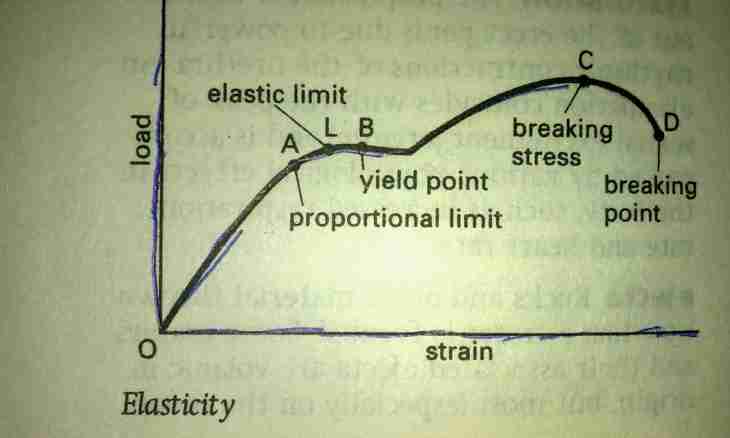Deformation of a physical body is always resulted by force which counteracts it, seeking to return a body to initial situation. It is possible to determine this elastic force in the simplest case by Hooke's law.
Instruction
1. The elastic force operating on the deformed body arises as a result of electromagnetic interaction between its atoms. There are different types of deformation: compression/stretching, shift, bend. Under the influence of external forces the different parts of a body move differently, from here distortion and elastic force which is directed towards a former state.
2. Deformation of stretching/compression is characterized by the direction of external force along a subject axis. It can be a core, a spring, a column, a column and other body having the long form. At distortion the cross section changes, and elastic force is proportional to the mutual shift of particles of a body: Fupr = - k · x.
3. This formula is called Hooke's law, however it is applied not always, and only at rather small values kh. Size k is called rigidity and is expressed in N/m. This coefficient depends on initial material of a body and also a form and the sizes, it is proportional to cross section.
4. At shift deformation the volume of a body does not change, but its layers change the situation from each other. Elastic force is equal to the work of coefficient of elasticity at shift which is in direct dependence on the cross section of a body at a corner size between an axis and a tangent in the direction of which external force works: Fupr = D•α.
5. The bend is more difficult type of deformation, it consists in impact of force on the internal surface of a body, at the same time its ends are fixed on bases. The metal beam as a part of a building construction can be an example. Elastic force in this case is called force of reaction of a support and on the module is equal to gravity if there is no additional external force: Fupr = - m•g.
6. Deformation is elastic and plastic. At elastic distortion the body quickly takes the former form after cancellation of external force, and at plastic it does not occur. It depends on influence size, but more on material of which the body is made. For example, plasticine is capable to take any form, and rubber will return to an initial state (at a normal temperature).

